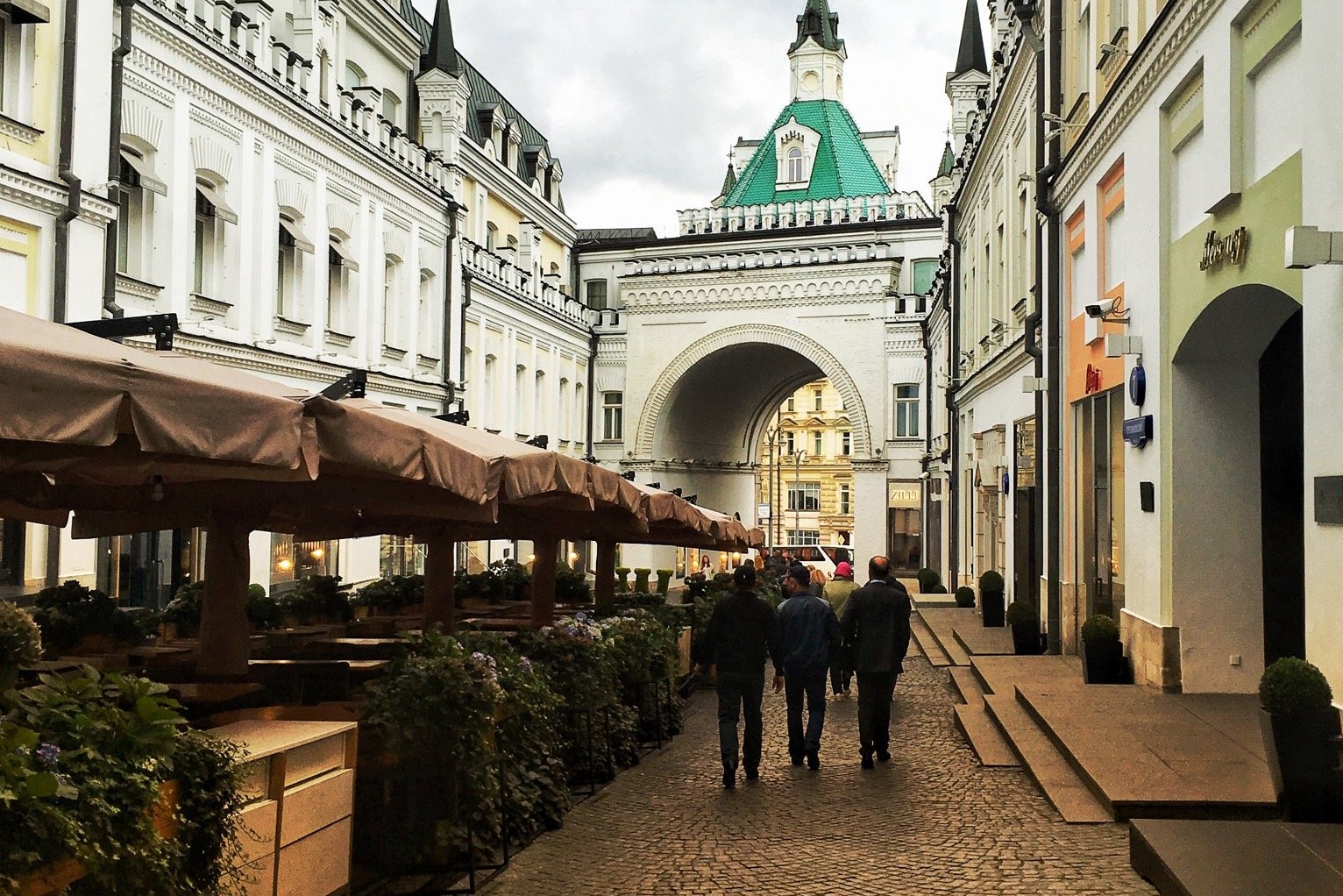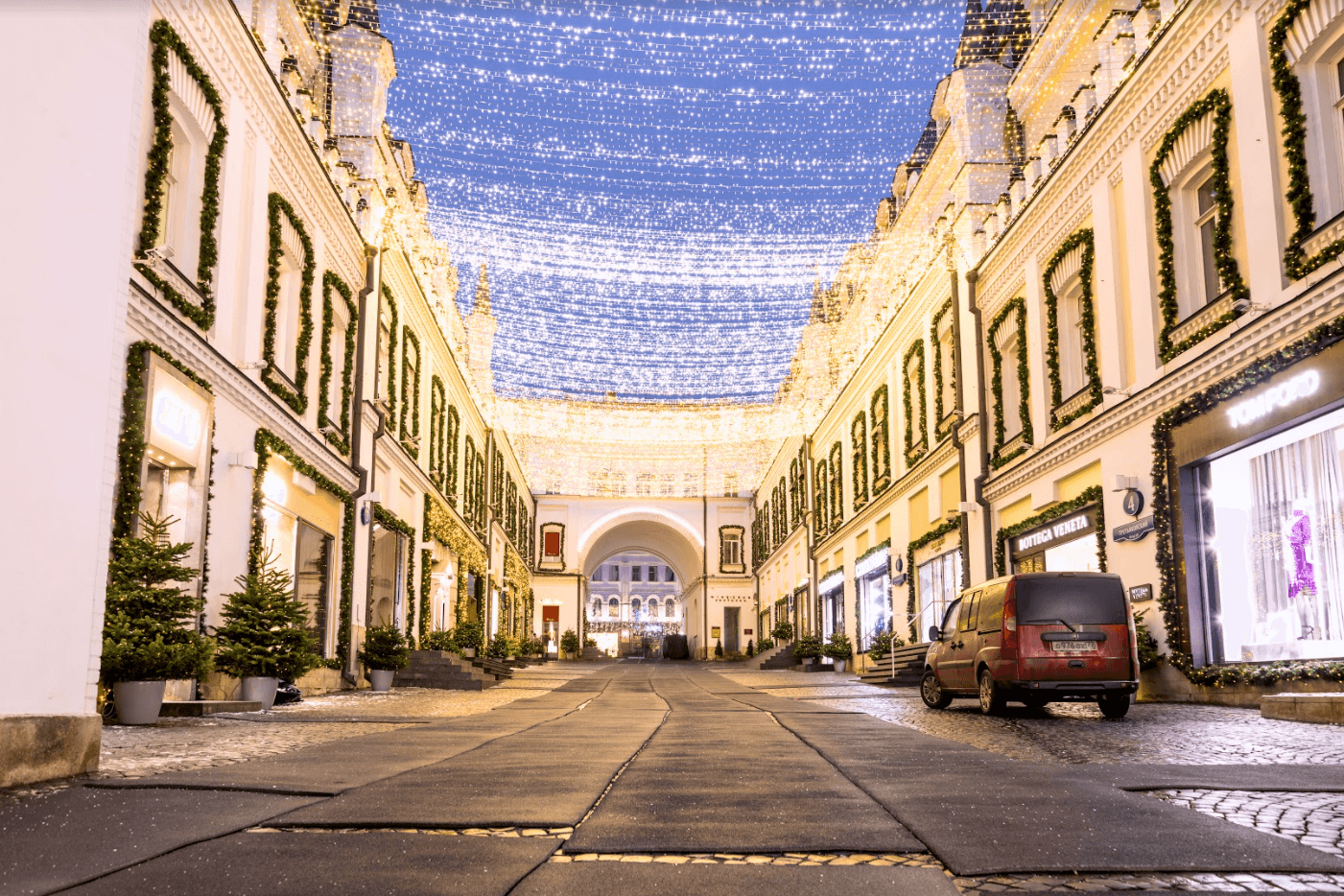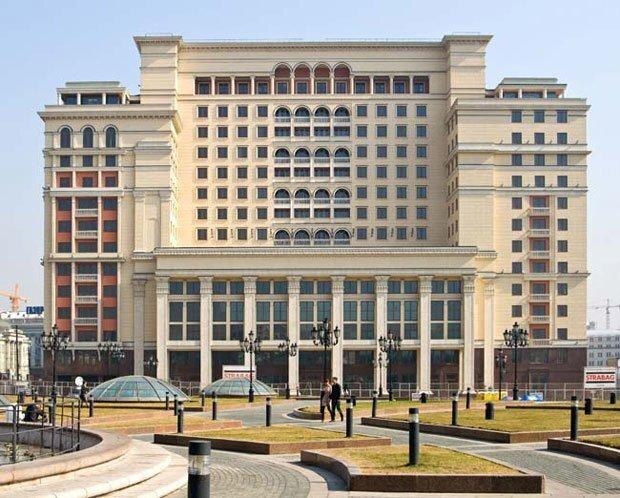Одна из самых необычных построек на Никольской улице — Третьяковские торговые ряды, которые соединяют Китай-город, Никольскую улицу и Театральный проезд.
В 1626 году на этом месте стоял двор князей Михаила, а потом Владимира Долгоруких. В 1700-х годах владение принадлежало уже князю Ивану Хованскому. А в 1718 году участок приобрел граф (первый в роде Шереметевых) Борис Петрович Шереметев, который владел большой родовой усадьбой напротив. На новом же месте граф — сподвижник императора Петра, его фельдмаршал, автор военных побед — устроил Малый Конюшенный двор. За свою службу при царе Борис Петрович скопил такое огромное богатство, что три поколения его внуков и правнуков не смогли его истратить, хотя усердно старались. Во времена графа Бориса и его сына Петра Шереметевы владели половиной Никольской улицы. На ней с обеих сторон стояли их великолепные палаты за узорчатыми решетками и два Конюшенных двора — Большой и Малый.
Внук графа Бориса Николай Петрович Шереметев начал распродавать имеющуюся в его распоряжении недвижимость. Первым он продал Малый Конюшенный двор. Купил его в 1808 году петербургский книготорговец Иван Петрович Глазунов. На Никольской улице размещался один из самых известных книжных торгов, именно поэтому петербургский купец хотел открыть здесь свою лавку. Глазуновы торговали книгами с конца XVIII века. Сперва это была мелкая торговля.
Начиная с 1790 года И.П. Глазунов начал сам издавать книги, которые печатали в разных типографиях Москвы и Петербурга. Основой успешной торговли Глазунова была продажа русских книг. В 1802 году он открыл свою типографию в Петербурге, которая просуществовала до революции. В Московской же лавке он торговал книгами и карикатурами до пожара 1812 года, во время которого лавка с товаром вся выгорела.
Новый красивый дом для своей книжной торговли И.П. Глазунов заказал Осипу Бове, который возвел по линии Никольской улицы трехэтажный дом с шестиколонным портиком дворцового типа. Высокий рустованный первый этаж предназначался для лавок, в двух верхних были квартиры, сдававшиеся в наем. В 1818 году была открыта книжная лавка, которой управлял сын Ивана Петровича Петр Глазунов. В этой книжной лавке продавались произведения А.С. Пушкина, который сам неоднократно тут бывал в 1820–1830-е годы. Книготорговая и издательская фирма Глазуновых была уникальна тем, что она существовала более 100 лет и ее дела вели только члены семьи Глазуновых. Лишь революция 1917 года заставила их прекратить книжное дело. Кстати композитор А.К. Глазунов был из этой большой семьи.
В 1868 году участок покупают братья Павел и Сергей Михайлович Третьяковы. В 1869 году они подают в Городскую Думу прошение о перепланировании участка, дозволении разобрать часть стены, а посередине устроить проезд, соединяющий Никольскую с Театральным проездом. Предполагалось, сделать проезд общедоступным, чтобы удобнее было попасть на Никольскую и провозить товар в Китай-город. В 1870 году было получено высочайшее позволение на разбор части стены. Автор проекта новой Торговой галереи и проезда был зять Третьяковых — присяжный архитектор Александр Сергеевич Каминский. Он был женат на сестре Третьяковых Софье Михайловне. По Никольской был выстроен дом в стиле неоренессанса, а на Театральном проезде дом в русском стиле, гармонирующий со стеной Китай-города. В обоих домах были сделаны большие проездные арки. Особенно удачным получился вид через арку ворот, располагавшуюся на Никольской улице, на вторые ворота — за счет небольшого поворота арки с оси проезда — создается впечатление исторически сложившейся московской улицы с разновременной застройкой. В самом проезде с двух сторон построили дома под магазины с кирпичным декором немного «суровым», зато с большими окнами витринами. Тут находились крупный чайный магазин Василия Гавриловича Куликова, парфюмерный «Брокар и Ралле», готового платья братьев Алексеевых, часовые и ювелиные магазины фирмы Виктора Габю, знаменитый магазин «Феникс», торговавший популярной среди московских аристократов мебелью в стиле модерн.
Власти присвоили имя братьев Третьяковых устроенному ими проезду, о чем говорит укрепленная слева в арке ворот на Никольской ул. старая табличка — «Почетныхъ гражданъ П.М. и С.М. Третьяковыхъ».
В начале 2000-х годов компания Mercury, крупнейший российский владелец дорогих бутиков, реставрировала Третьяковский проезд и создала в центре города «проезд роскошных бутиков».



.jpg&w=1920&q=75)
.jpg&w=1920&q=75)







.jpg&w=1920&q=75)


%20BEL_0521.jpg&w=1920&q=75)










